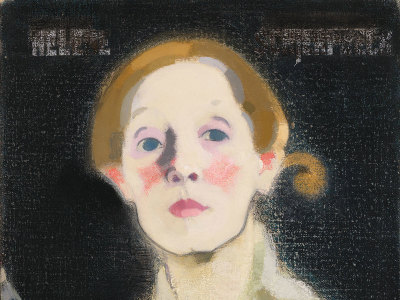“Amid this climate crisis, I have five reasons for hope.”
By Dr Jane Goodall
Published 5 November 2019

“Amid this climate crisis, I have five reasons for hope.”
In the build up to ‘Eco-Visionaries’, our new exhibition exploring artistic and architectural responses to climate change, one of the world’s leading environmentalists, Jane Goodall, lays down five reasons we should remain hopeful about the future.
-
This is an extract from the book, Eco-Visionaries: Conversations on a planet in a state of emergency, which accompanies our exhibition Eco-Visionaries.
During my 85 years on planet Earth I have seen so much change. When I was a child the thought of walking on the moon was just science fiction. Yet not only did we do that, but we sent a rocket to Mars that released a robot to photograph the surface of the Red Planet. These photographs show clearly that it is not suitable to sustain human life. We have only one home, this beautiful blue and green Earth, and we are destroying it.
When I began studying chimpanzees in Tanzania in 1960, the Gombe National Park was part of a forest belt that stretched right across equatorial Africa. By 1990 international logging and mining companies along with human population growth had made savage inroads into those forests, building roads that gave access to previously remote areas, enabling the bushmeat and live animal trades to grow.
The main difference between us and our closest living relatives, the chimpanzees, is the explosive development of our intellect. So how is it possible that the most intellectual creature ever to walk the planet is destroying its only home? There seems to be a disconnect between our clever brains and our hearts – our love and compassion. We are caught up in a materialistic society that values personal wealth and growth of national GDP, where the goal is economic development at the cost of preserving the natural world for future generations. Meanwhile, the rich grow richer while more and more people live in crippling poverty. And still the human population is growing. It makes no sense to think there can be unlimited economic growth on a planet of finite natural resources, and in some instances, we are using up more of those resources than Mother Nature can replenish.
It is a grim scenario and it’s no wonder so many people have lost hope – and if our youth loses hope, then there is no hope for the future. But I believe we have a window of time during which we can start to heal some of the harm we have inflicted on Mother Nature, and at least slow down the climate crisis. But that window is closing, and each one of us must play our part in keeping it open. We must get together and work to find ways to save Planet Earth for future generations.
-
It makes no sense to think there can be unlimited economic growth on a planet of finite natural resources.
-
I have five reasons for hope:
1. Today’s young people have understood what is happening to their future and they are taking action – joining protests, planting trees, recycling, encouraging their friends and changing the attitude of their parents.
2. Our amazing brains – we are coming up with more and more innovative solutions to deal with the problems we have created. As individuals we are learning how to leave an ever-lighter ecological footprint every day.
3. The resilience of nature if we give her a chance. Places that we destroyed can once again support life. Animals on the brink of extinction can be given another chance.
4. For the first time in human history we are able to reach out to people around the globe through social media, throwing a spotlight on problems and sharing solutions, urging an ever growing body of people from different nations, cultures and religions to fight for social and environmental justice.
5. And finally, there is the indomitable human spirit. Those people who tackle problems that seem insoluble won’t give up, and often succeed.
So those are my reasons for hope but we must remember the window is closing. We must get together, all of us, and do what we can to make a difference. And we must do this NOW.Jane Goodall is an environmentalist best known for her ground-breaking research into the lives of wild chimpanzees in Gombe.
-
Three artists’ responses to the climate-change emergency
-

Designs for an Overpopulated Planet: Foragers
If the current rate of ecological transformations continue, then there won’t be enough food to feed the planet by 2050 . Foragers is a speculative work focusing on how radically the human diet and digestive system will need to change to ensure survival. Perhaps – through synthetic biology – humans will be able to develop new digestive systems and process barely edible resources.
-

The Substitute
In March 2018, the last male northern white rhinoceros died, leaving only two female northern white rhinoceros remaining on Earth. Ginsberg’s six-minute video projection, The Substitute, explores our preoccupation with creating new life forms – rather than preserving existing ones.
-

The Breast Milk of the Volcano
Unknown Fields connect the consumption of batteries in the northern hemisphere to the extraction of resources in the south. The work’s title, The Breast Milk of the Volcano, refers to an Inca origin myth of the Salar de Uyuni, in which the salt flats were formed by the breast milk and tears of a mother volcano mourning the loss of her child.
-
-
-

See the exhibition
Eco-Visionaries
From climate change to species extinction and resource depletion, the damaging effects of modern life are more tangible than ever.
Discover how architects, artists and designers are responding to some of the most urgent ecological issues of our times at Eco-Visionaries, a timely exhibition that brings together international practitioners including Olafur Eliasson Hon RA, Alexandra Daisy Ginsberg and Unknown Fields, amongst others.
-





